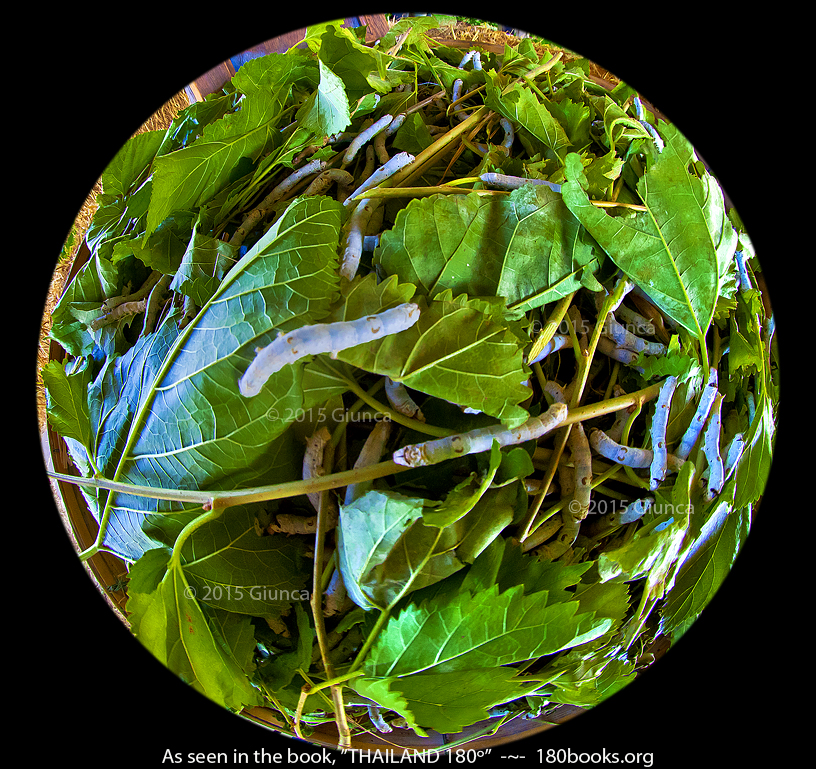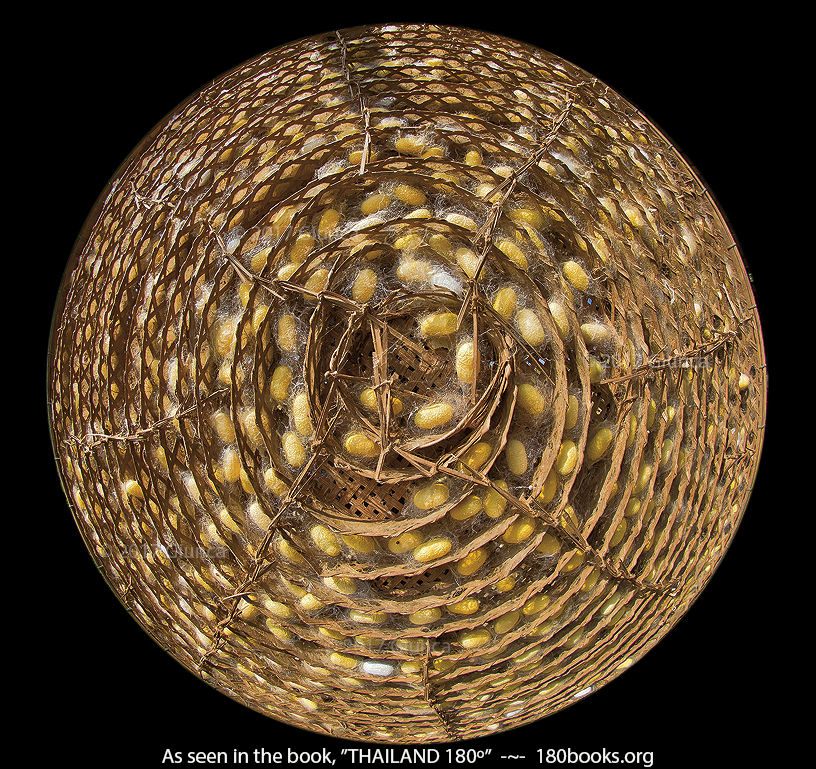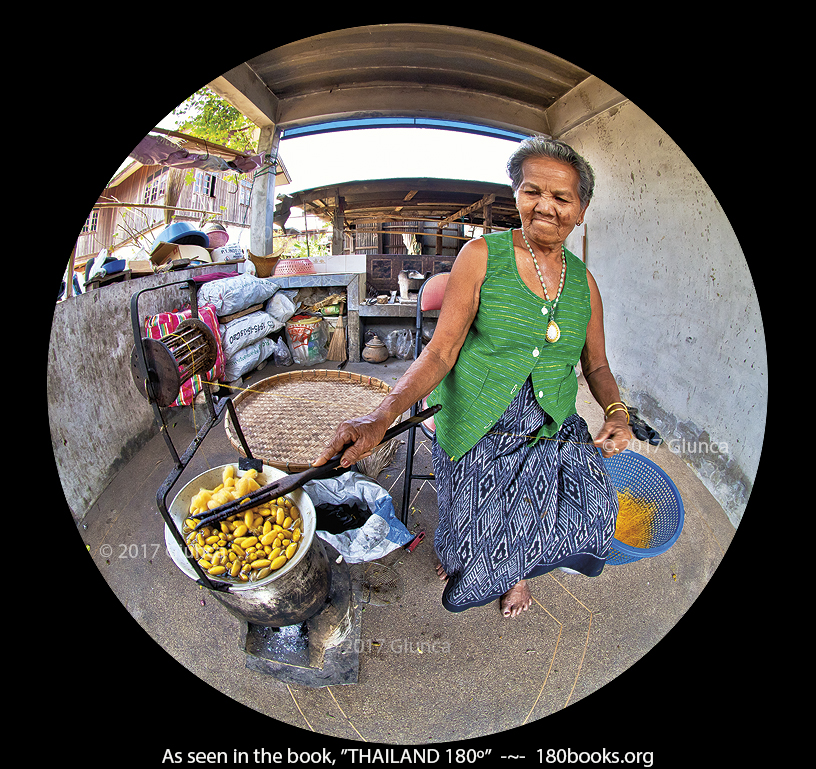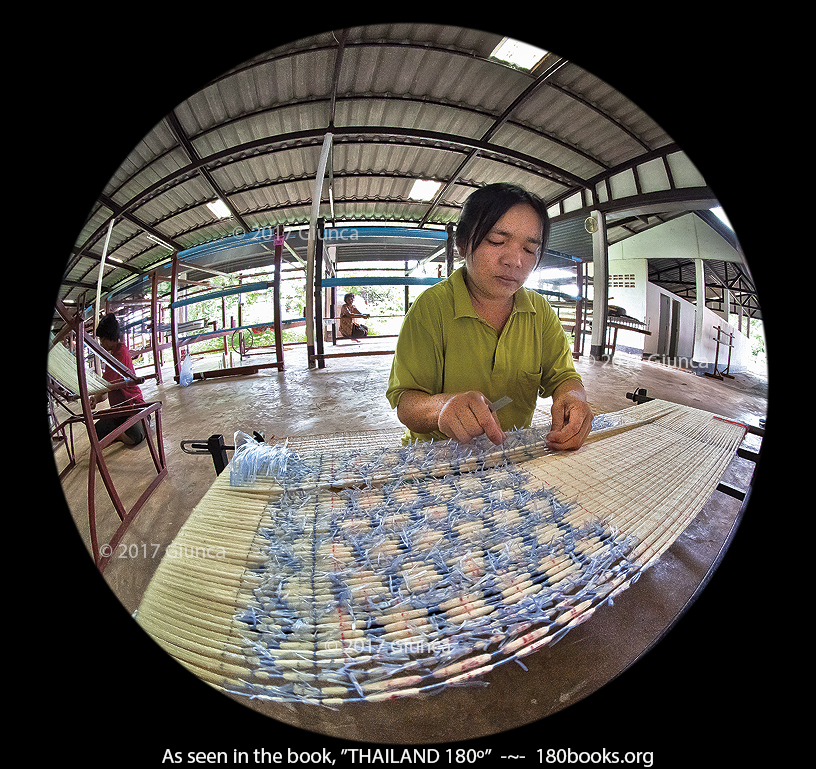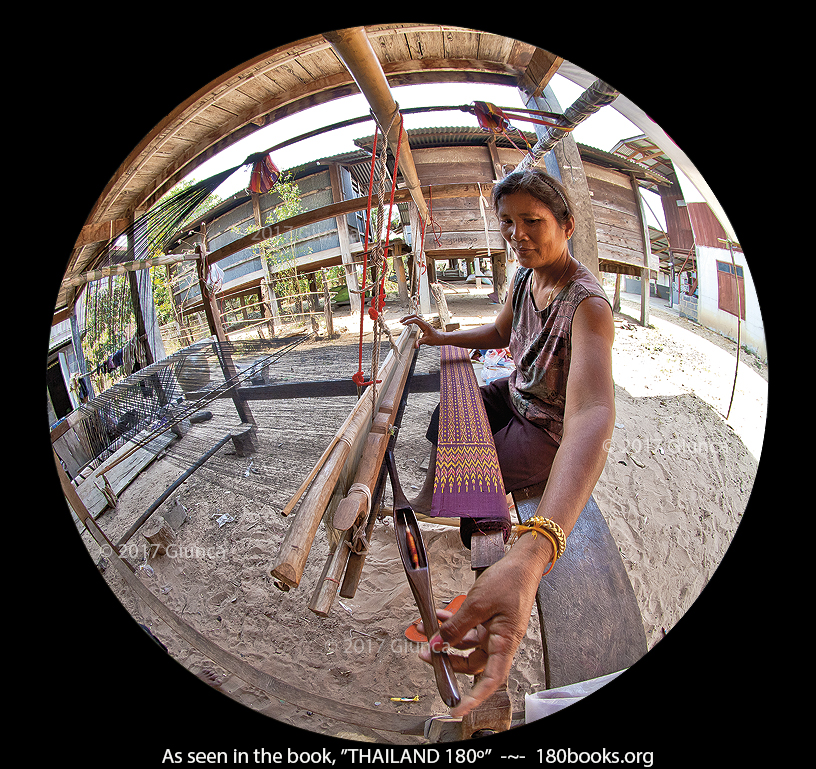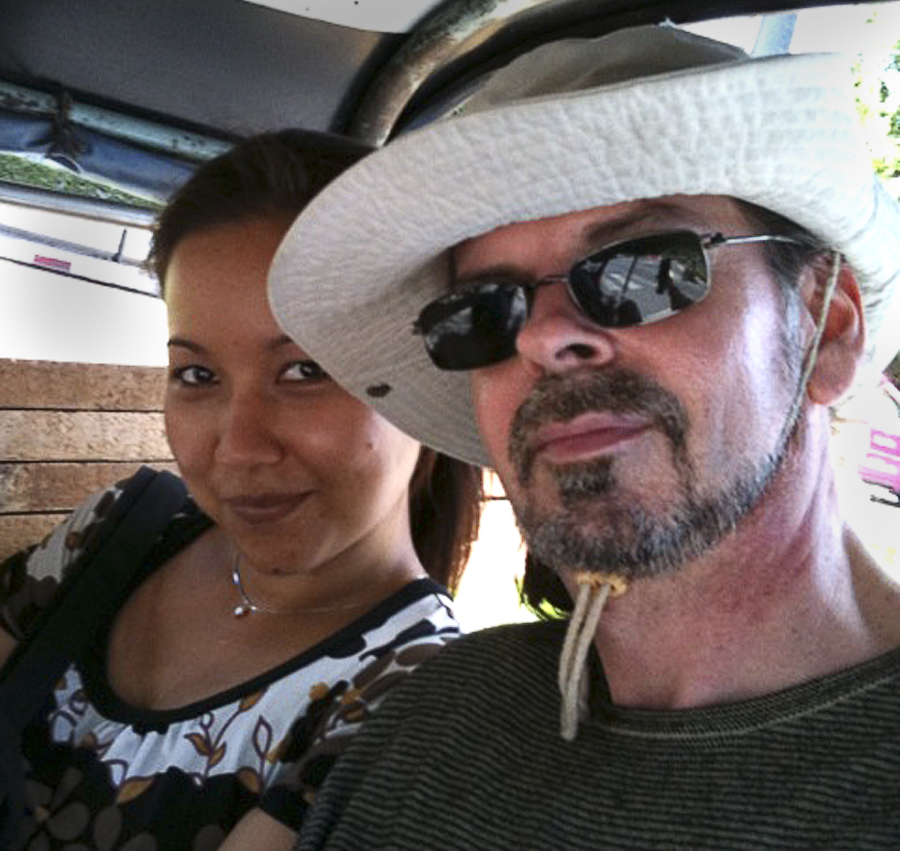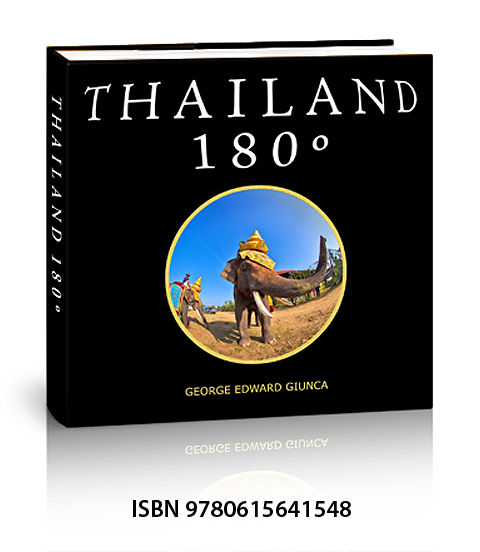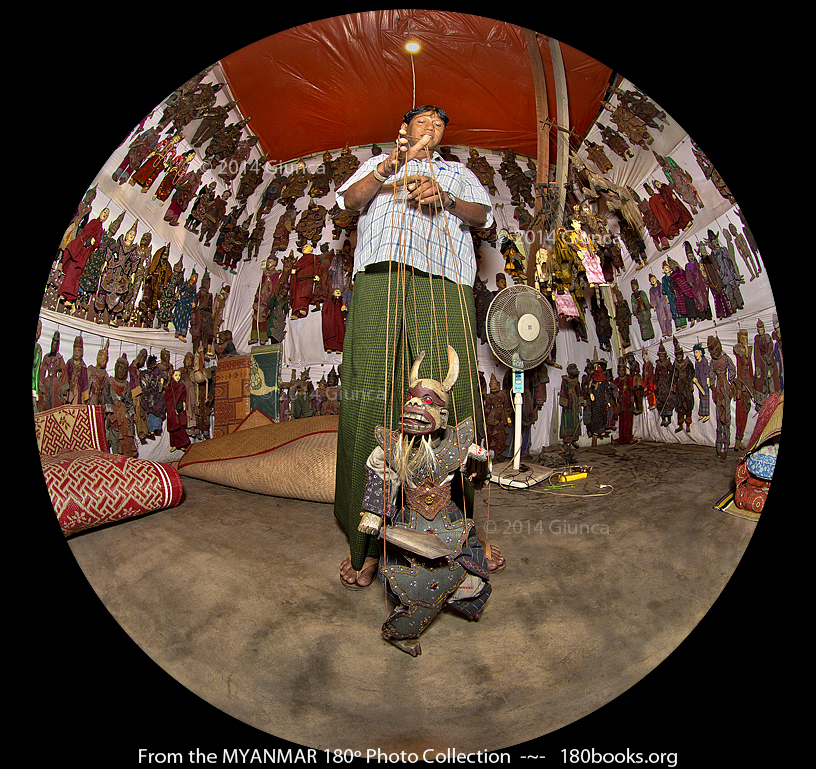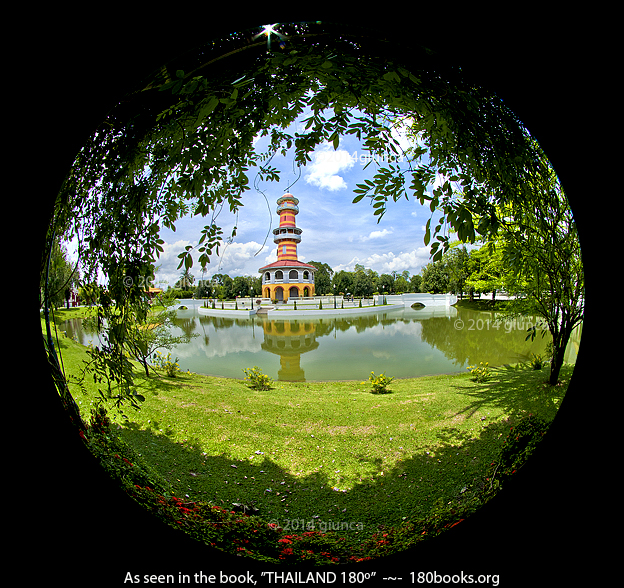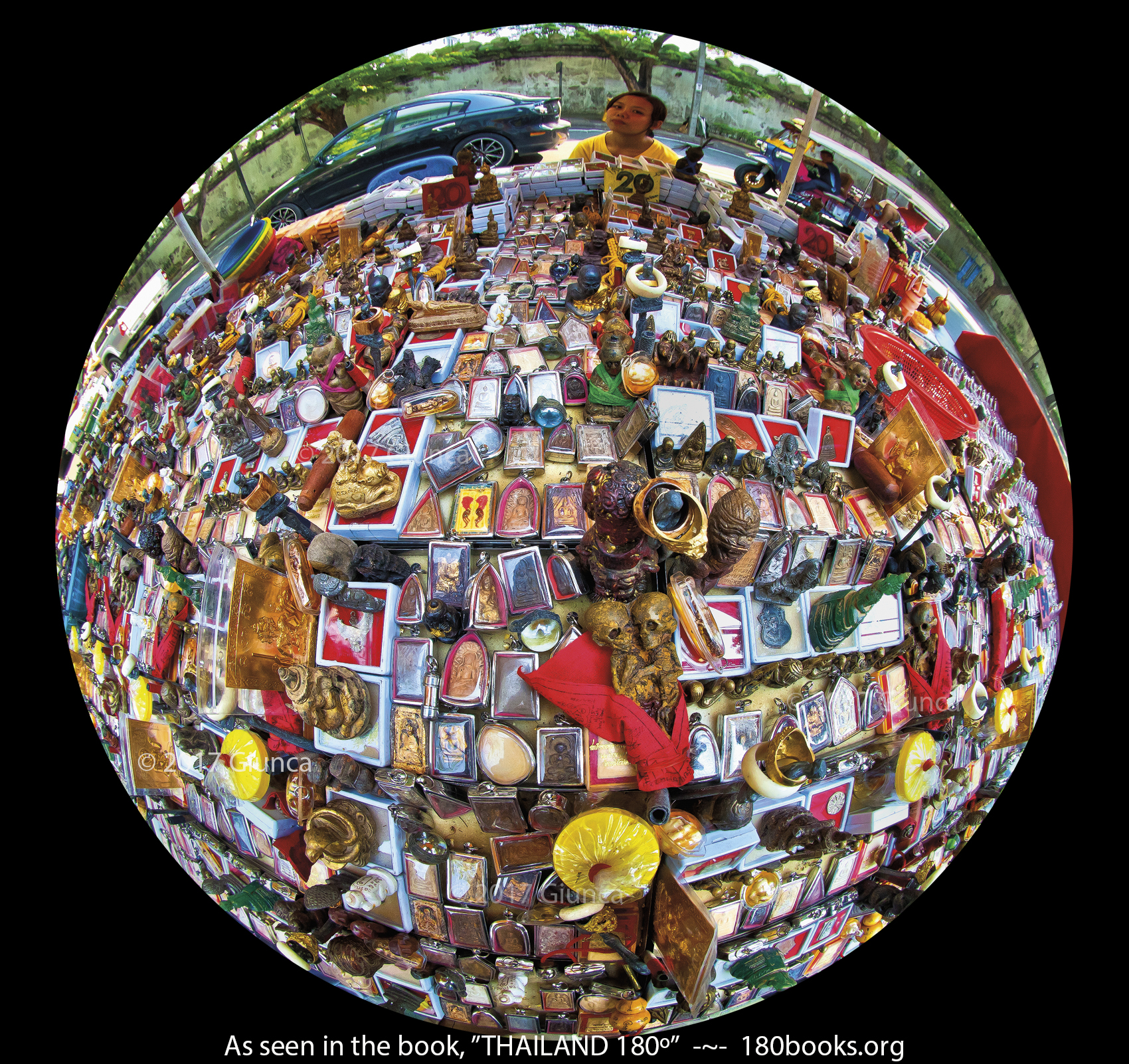Silk Production from Worms to Wearables
We actually started this blog on Her Majesty Queen Sirikit’s birthday, discussing the Foundation of the Promotion of Supplementary Occupations and Related Techniques of Her Majesty Queen Sirikit of Thailand, or the SUPPORT Foundation in short… In this blog, we’re going to trace the process off silk fabric, from silkworm to loom!. Thailand has around 150,000 families that raise the caterpillars, most of them are farmers in the northeast (Isaan) that followed this tradition until it became a second source of income. Today they produce 1,400-1,500 tons of silk a year, but this is still not enough for the demand.
หลายคนยึดติดกับความคิดที่ว่า “ผ้าไหม ใส่แล้วจะดูแก่” .. แต่ THAILAND 180º ชอบผ้าไหมมาก ไม่เคยเห็นว่าจะแก่หรือเชย อยู่ที่แบบและการโอกาสในการสวมใส่ ซึ่งปัจจุบันผ้าไหมไทยเป็นที่นิยมและแพร่หลายมาก อีกทั้งยังนำเข้าเส้นไหมและผ้าไหมจากประเทศไทย ในหมู่สาวไทยยุคใหม่ก็นิยมกันในหน้าร้อนและเทศกาลสงกรานต์แบบนี้ เกิดไอเดียเก๋ๆ หยิบผ้าซิ่น-ผ้าไหมมาสวมใส่เดินขึ้นรถไฟฟ้าบ้าง เดินห้างบ้าง ใส่ไปทำงานบ้าง ไปเรียนบ้าง ดูน่ารัก น่าชื่นชมนะนี่
จากบทความเดิมตอน “ทรงผ้าไทย เสด็จฯ ไปทั่วหล้า” … วันนี้มากล่าวต่อถึงขั้นตอนมาเป็นผืนผ้าไหม ประเทศไทยเป็นแหล่งผลิตไหมและผลิตภัณฑ์ที่มีคุณภาพดีและมีชื่อเสียงมากแห่งหนึ่งของโลก มีเกษตรกรผู้ประกอบอาชีพด้านการปลูกหม่อนเลี้ยงไหมกว่า ๑๕๐,๐๐๐ ครัวเรือน ส่วนผู้ปลูกหม่อนเลี้ยงไหมและผลิตผ้าไหมส่วนใหญ่เป็นเกษตรกรอยู่ในประเทศในภาคตะวันออกเฉียงเหนือ ส่วนที่เหลือกระจายอยู่ในภาคอื่นๆ ทั้งนี้เพื่อเป็นอาชีพเสริมเพิ่มรายได้จากการเกษตร ผลผลิตไหมภายในประเทศผลิตได้ประมาณปีละ ๑,๔๐๐ – ๑,๕๐๐ ตัน แต่ก็ยังไม่เพียงพอต่อความต้องการ
Starting with the 1st Step of Raising the Silkworms
A small silkworm comes from the eggs of a silk moth, it has a 45 – 52 day-lifecycle. The silkworms eat only mulberry leaves, then sleep and defecate repeatedly for 3-5 cycles. Afterward, they stop eating and build a cocoon from their spittle. At this point, the farmer has to separate and arrange them in a “Jor”, a circular piece of woven bamboo. After a period of 6-7 days, they collect them to draw the silk, while keeping some good cocoons to became moths and lay the eggs for the next life cycle. If the cocoon is left until the10th day, the moths will hatch, and the fiber from that cocoon will be broken and can’t be used. The fiber from each cocoon varies in length from 350 – 1,200 meters, depending on the species, humidity, and temperature. A temperature between 26 – 28 ºC with a relative humidity between 70 – 85 percent, yields the best silk.
เริ่มด้วยการเลี้ยงไหม — วงจรชีวิตของหนอนไหมประมาณ ๔๕ – ๕๒ วัน เริ่มจากไข่มาเป็นหนอนไหม ซึ่งหนอนไหมจะกินอาหารเพียงอย่างเดียว คือ ใบหม่อน จากนั้นจะหยุดกินอาหารและลอกคราบ กิน-นอนและลอกคราบแบบนี้ประมาณ ๓ – ๕ ครั้ง เป็นระยะเวลาประมาณ ๓ สัปดาห์ และหยุดกินอาหาร ระยะนี้เรียกว่า “หนอนสุก” ช่วงนี้ผู้เลี้ยงไหมต้องรีบแยกหนอนไหมสุกออกจากกองใบหม่อนมาใส่ใน “จ่อ” อันเป็นอุปกรณ์ที่จะให้ตัวไหมเกาะเพื่อพ่นใยห่อหุ้มตัวประมาณ ๖ – ๗ วัน ก็จะสามารถเก็บรังไหมออกจากจ่อได้ ซึ่งหนอนไหมแต่ละตัวจะพ่นใยยาวไม่เท่ากัน อาจสาวได้ความยาวตั้งแต่ ๓๕๐ – ๑,๒๐๐ เมตร ขึ้นอยู่กับสายพันธุ์ หนอนไหมจะเจาะรังออกมาเป็นผีเสื้อเมื่ออยู่ในรังครบ ๑๐ วัน ซึ่งผู้เลี้ยงจะคัดหนอนไหมที่สมบูรณ์ไว้ทำพันธุ์ ส่วนที่เหลือนำไปสาวไหมก่อนที่ผีเสื้อจะเจาะรังออกมา ซึ่งเส้นจะขาดและทำเส้นไหมไม่ได้ อุณหภูมิที่เหมาะสมในการเลี้ยงไหมระหว่าง ๒๖ – ๒๘ องศาเซลเซียส และมีความชื้นสัมพัทธ์ระหว่างร้อยละ ๗๐ – ๘๕
Drawing Silk
Cocoons are placed in boiling water to dissolve the Serricin from the cocoon. When the cocoons float, a small stick is used to draw out the silk threads. The thread has 3 grades: “Mai Yai” which starts from the big and rough thread of the outer cocoon, “Mai Klang” which uses the thread from the entire cocoon, and “Mai Noi”, a thin thread that is produced from the fine, inner part of the cocoon. Different grades of threads are preferred by different countries. Japan chooses to import the thicker, Mai Yai thread, whereas France prefers the fine Mai Noi thread. Thais use all three grades, depending on the use of the fabric.
การสาวไหม — นำรังไหมไปต้มในน้ำเพื่อละลายโปรตีนที่ยึดเส้นไหม รังไหมจะเริ่มพองตัวออก ใช้ไม้พายเล็ก (ตรงกลางเป็นแฉก) คนรังไหมกดรังไหมให้จมน้ำเสียก่อน เมื่อรังไหมลอยขึ้นจึงค่อยๆตะล่อมให้รวมกันแล้วใช้ไม้พายนั้นเกี่ยวเส้นใย การสาวต้องดึงเส้นไหมโดยให้เส้นไหมลอดออกมาตามแฉกไม้ ซึ่งจะทำให้ได้เส้นไหมที่สม่ำเสมอและรังไหมไม่ไต่ตามมากับเส้นไหม ผู้สาวไหมต้องมีความชำนาญและทักษะจึงจะได้เส้นไหมที่มีคุณภาพดี เมื่อเติมรังไหมลงไปอีกเป็นระยะ รังไหมใหม่สามารถรวมเส้นกับรังไหมเก่าได้ โดยไม่ทำให้เส้นไหมขาด
การสาวต้องเริ่มต้นจากขุยรอบนอกและเส้นใยภายในรวมกัน เรียกว่า “ไหมสาม” หรือ “ไหมใหญ่” คือเป็นการเอาเฉพาะเปลือก และพักยกรังไหมเอาไว้เส้นไหมจะแข็ง เส้นใหญ่และหยาบ ถ้านำไปทอจะได้ผ้าชนิดหนา ถัดมาคือ “ไหมสอง” หรือ “ไหมกลาง” คือเส้นไหมที่สาวเอาไหมชั้นนอกออกแล้ว แทนที่จะแยกให้อยู่คนละพวก กลับสาวไปเรื่อยๆ พอรังไหมใกล้หมดก็เติมรังไหมเข้าไปอีก แล้วสาวต่อไปอีก ซึ่งจะได้เส้นไหมขนาดโต อาจมีปุ่มปนบ้าง นิยมใช้เป็นเส้นพุ่งในการทอ ครั้นสาวถึงเส้นใยภายในแล้ว เอารังไหมที่มีเส้นภายในแยกไปสาวต่างหากเรียกว่า “เส้นไหมน้อย” หรือ “ไหมหนึ่ง” จะได้เส้นเล็กละเอียดมีขนาดสม่ำเสมอ ไม่มีปุ่มปม เป็นไหมที่สวยงามและมีคุณภาพดีนิยมใช้ทำเป็นเส้นยืน
Silk Thread Preparation
Because a single thread filament is too thin to use on its own, Thai women combine many threads to produce a thicker, usable fiber. They do this by hand-reeling the threads onto a wooden spindle to produce a uniform strand of raw silk, as shown above. This is a slow and tedious process that takes 40 hours to produce a half kilogram of Thai silk.
Due to growing demand, local companies sometimes use a reeling machine, but the majority of silk thread is still hand-reeled as it produces three grades of silk: two fine grades that are used for lightweight fabrics and a thick grade for heavier material.
The silk thread is then soaked in hot water and bleached to remove the natural yellow coloring of the silk yarn. After it is washed and dried, the silk thread is then woven using a traditional hand-operated loom.
การเตรียมเส้นไหม — นำเส้นไหมที่ได้มากรอเข้า “ กง ” แล้วนำไปหมุนเข้า “ อัก ” เพื่อตรวจหาปุ่มปม หรือตัดแต่งเส้นไหมที่ไม่เท่ากันออก จึงเอาเข้าเครื่องปั่นเพื่อให้เส้นไหมแน่นขึ้น ก่อนที่จะหมุนเข้ากงอีกครั้ง เพื่อรวมเป็นไจ เรียกว่า “ไหมดิบ” เส้นไหมดิบที่ได้จะต้องทำการชุบให้อ่อนตัวด้วยน้ำสบู่อ่อนๆ แล้วนำไปผึ่งลมให้แห้ง และหมั่นกระตุกให้เส้นไหมแยกตัวเพื่อนำไปเข้าระวิง จากนั้นก็กรอเส้นไหมเข้าหลอด ดึงปลายไหมแต่ละหลอดเข้าไปรวมกัน ม้วนเข้าหลอดควบตามขนาดที่ต้องการ แล้วนำไปตีเกลียว-ลวก-ชุบน้ำเย็นและกรอเข้าระวิง เรียกว่า “ทำเข็ด” ซึ่งจะทำให้เกลียวอยู่ตัว
All About Ikat
Ikat — known in Thai as “mudmee”. The process involves dyeing only part of the thread, by first wrapping those parts that are to remain undyed. Ikat weaving is one of the most complicated and time-consuming ways to pattern cloth and ikat patterns are often handed down from generation to generation in the same family. In the photo above, the warp threads have been stretched onto a frame and a pattern is being formed by wrapping the dye resistant strips onto areas that prevent the absorption of color. After the threads are dyed, the loom is set up and the pattern is visible to the weaver when the dyed threads are used as warp. Handloom weaving is very complex work and requires great physical and mental effort when the fabric contains patterns formed by different or uniquely dyed yarns. It’s an art and produces unique, one-of-a-kind pieces of fabric.
ถึงตรงนี้ ขอกล่าวถึง มัดหมี่ อันเป็นศิลปะที่เกิดจากการมัดเส้นด้ายหรือเส้นไหม ผูกให้เป็นลวดลายเป็นเปลาะๆ แล้วนำไปย้อมสีก่อนทอ ลวดลายที่เกิดขึ้นเกิดจากการซึมของสีไปตามส่วนของเส้นไหมหรือเส้นด้ายที่เว้นไว้ไม่ถูกมัดขณะย้อม เมื่อย้อมสีแล้วแกะเชือกออกจะเกิดเป็นลวดลายตามช่องของการมัดส้นเชือก หากต้องการมัดหมี่หลายสีก็ต้องทำการมัดย้อมสีหรือเรียก “โอบหมี่” โดยมัดเส้นเชือกบริเวณส่วนที่ย้อมแล้วเพื่อรักษาสีที่ย้อมครั้งแรกในบริเวณที่ไม่ต้องการย้อมทับสีใหม่ แล้วนำมาย้อมสีทับหลายครั้งเพื่อให้ได้ลวดลายสีสันตามต้องการ ตำแหน่งที่มัดให้เกิดลวดลายนั้น จะต้องอาศัยทักษะเชิงช่างที่ชำนาญและแม่นยำ เพราะช่างมัดหมี่ของประเทศไทยไม่ได้มีการขีดตำแหน่งลวดลายไว้ก่อนแบบประเทศอื่นๆ ตำแหน่งการมัดลวดลาย จึงอาศัยการจดจำและสั่งสมจากประสบการณ์ของช่างล้วนๆ และลักษณะเฉพาะของผ้ามัดหมี่ก็อยู่ที่รอยซึมของสีที่วิ่งตามบริเวณของลวดลายที่ถูกมัดนี้แหละ ถึงแม้จะใช้ความแม่นยำในการทอมากเพียงไรก็จะเกิดลักษณะความเลื่อมล้ำของสีบนเส้นไหมให้เห็นแตกต่างกันไป ดังนั้นการมัดหมี่จึงนับเป็นศิลปะบนผืนผ้าซึ่งยากที่จะลอกเลียนให้เหมือนเดิมได้ในแต่ละผืนผ้า
Mudmee fabric is usually a four-yard long piece of cloth, that contains two yards of a solid or two-tone color and two yards of the mudmee pattern. The dying color and pattern are inspired by the natural resources in each region, and represents fertility and cultural diversity; such as flowers, trees, deer, elephants, turtles, peacocks, nagas, lanterns, water wave pattern, palace, etc, which makes it unique.
ลวดลายมัดหมี่ที่มีการสืบทอดกันมาตั้งแต่โบราณนั้น ส่วนใหญ่ได้แรงบันดาลใจจากธรรมชาติสิ่งแวดล้อมในวิถีชีวิตความเชื่อและขนบธรรมเนียมประเพณี อาทิ ลายดอกแก้ว ลายต้นสน ลายโคมห้า ลายโคมเจ็ด ลายบายศรี ลายกวาง ลายนกยูง ลายเต่า ลายพญานาค ฯลฯ ส่วนวัสดุย้อมสีธรรมชาติสะท้อนให้เห็นถึงความอุดมสมบูรณ์ของพันธุ์พืชในประเทศไทยที่มีความหลากหลาย ซึ่งช่วยให้ผ้ามัดหมี่ของไทยมีสีสันเฉพาะตัว และยังสะท้อนไปถึงความเชี่ยวชาญของแต่ละกลุ่มชน
Modern Silk Weaving
Traditionally, daily dress in Thailand was practical and rather plain. However, a great deal of time and expense was spent weaving fabric for weddings, temple ceremonies, funerals, important meetings, social occasions, and spirit appeasing ceremonies, resulting in spectacular quality as well as complex techniques and designs. In the northeastern Thailand, almost every household in the area has a loom and weaves mudmee silk. One village has recovered an original fabric design and developed their technique to make a silk fabric in the gorgeous, but a more complicated style of the Village of Chansoma Golden Brocade, in Ban Tha Sawang, Surin. This silk mixes gold thread with Mai Noi thread, before weaving. The weaving process is extremely complicated, weavers work in teams, each producing only 4-5 centimeters of fabric per day. Chansoma village drew national attention after some of their fine work was presented to Her Majesty, the Queen of Thailand.
วิธีการทอและสอดใส่ลวดลาย ซึ่งมีชื่อเรียกเฉพาะตามแต่ภูมิภาคและภูมิปัญญาท้องถิ่นที่สืบต่อกันมา เช่น ผ้ามัดหมี่ ผ้าตีนจก ผ้าขิด ผ้าแพรวา ผ้ายกดอก เป็นต้น จนได้มีการพัฒนาเทคนิคการทอผ้าให้มีความละเอียดละออและความประณีตมากยิ่งขึ้นไปอีก เช่น หมู่บ้านทอผ้าไหมยกทองจันทร์โสมา ตำบลท่าสว่าง อำเภอเมืองสุรินทร์ หมู่บ้านที่ได้รับการยกย่องว่า “ทอผ้าไหมหนึ่งพันสี่ร้อยสิบหกตะกอ” นับเป็การฟื้นฟูการทอผ้ายกทองชั้นสูงแบบราชสำนักไทยโบราณ จนกลายเป็นผ้าทอที่มีความงดงามอย่างมหัศจรรย์ และมีชื่อเสียงโด่งดังไปทั่วโลก ความโดดเด่นของผ้าไหมยกทอง “จันทร์โสมา” เกิดจากการเลือกเส้นไหมน้อยที่เล็กและบางเบานำมาผ่านกรรมวิธี ฟอก ต้ม แล้วย้อมสีธรรมชาติ สอดแทรกการยกดอกด้วยไหมทองที่ทำจากเงินแท้มารีดเป็นเส้นเล็กๆ ปั่นควบกับเส้นด้ายใช้ตะกอเส้นพุ่งพิเศษที่ทำให้เกิดลาย จำนวนตะกอมากกว่าร้อยตะกอ จะวางกี่บนพื้นดินธรรมดาก็มีความสูงไม่พอ ต้องปรับพื้นที่ให้เป็นสองชั้นเพื่อรองรับความยาวของตะกอที่ห้อยลงมาจากกี่ให้เป็นระเบียบ และให้คนช่วยยกตะกอสามารถทำงานได้ถนัดด้วย เนื่องจากไม้ตะกอมีจำนวนมากจึงต้องใช้คนทอ ๔ – ๕ คน และจะได้ผลงานเพียงวันละ ๔ – ๕ เซนติเมตรเท่านั้น
Thai silk has a unique luster, with a sheen from two unique blends. By weaving a different color thread in each direction, an iridescent fabric that appears to change color when held at varying angles to a light is created.
You can distinguish real Thai silk from synthetic silk by burning a thread. Burning silk smells like burning hair, but synthetic silk smells like burning plastic. If you move the flame, Thai silk immediately stops burning. Also, Thai silk is usually 10 times more expensive than artificial silk! The main importers of Thai silk include USA, Japan, Italy, UK, and France. In Thailand, silk has become trendy once again and is very popular throughout the kingdom.
ผ้าไหมทอด้วยมือที่ผลิตในประเทศไทยนั้นปกติก็มีความละเอียด สวยงาม มีความแวววาวเป็นมันเลื่อม เนื้อผ้าฟูไม่เรียบ อ่อนนุ่ม มีน้ำหนัก มีลวดลายและสีสันโดดเด่นเป็นพิเศษ แตกต่างจากผ้าไหมของประเทศอื่นๆ จึงเป็นสินค้าที่ได้รับความนิยมสูงจากผู้บริโภคในต่างประเทศ ตลาดส่งออกที่สำคัญ คือ สหรัฐอเมริกา ที่นำเข้าผ้าไหมและเสื้อผ้าไหมสำเร็จรูป, รองลงมาคือประเทศญี่ปุ่น อิตาลี อังกฤษ และฝรั่งเศส แม้แต่สินค้าแบรนด์เนมจากยุโรปและอเมริกาต่างพากันออกแบบคอลเลคชั่นผ้าไหมลวดลายต่างๆ … “ผ้าไหมและผ้าไทย ใส่แล้วเก๋ สวย-หล่อ เลิศ ดูดี มีสไตล์” โอเคป่ะ?!
!!..คลิ๊กแผนที่..!! ดูภาพสวยๆ อ่านบล็อกสถานที่ท่องเที่ยวจาก THAILAND 180º ได้นะคะ อัพเดทเพิ่มเติมตลอดค่ะ
We had to eliminate the ability to comment from this wordpress site due to excessive spam. If you enjoyed this story, subscribe using the “Subscribe” button below, or visit our facebook fan page to comment Here
We’d LOVE to hear from you!
ผู้ติดตามอ่านบล็อก สามารถติดตามอัพเดทโพสต์บล็อกได้โดยสมัครสมาชิกที่บล็อกนี้ หรือ กดไลค์เฟสบุ๊คเพจของเราที่นี่ Here
Blog : Thai by Apisatha Giunca
Blog : English by George Edward Giunca
About the Authors
Photographer George Edward Giunca, and his Thai wife, Apisatha, have traveled around Thailand armed with a circular fisheye lens to create a photo essay on the rich cultural diversity, and abundant natural beauty of the Kingdom of Thailand. Fleeing from angry water buffaloes, slapping huge mosquitoes, watching exotic festivals and religious rituals, gorging on delicious spicy food, applying aloe vera cream to sunburned skin, wading through rice paddies, getting drenched to the bone by heavy monsoon rains, and gawking at breath-taking scenery; made it a journey of epic proportions! The result is the book, THAILAND 180º. Later, they traveled extensively through Myanmar, Malaysia, and India, gathering a massive collections of 180º photos. They currently live in Chiang Mai where they continue to blog and are now working on a CHIANG MAI 180º book.
Here’s How to Order Your Copy of THAILAND 180º Collectors EditionToday!
In Thailand —>>>http://www.thailand180.com/thaiorder.html
The Rest of the world: We are offering our book on Amazon.com, below list price and I’ll pay for the shipping within the United States! http://amzn.to/1knDPRR
Not Familiar with Our Book???
This show details the origin of 180 Books, a series of art/travel books illustrated with a circular fisheye lens. By using infographics, pictures from our THAILAND 180º book, and never seen before images from our vault, we’ll demonstrate this unique lens and present our unique books.
Also, because there’s nothing to watch on TV, here’s a trailer about our book, “THAILAND 180”
Above is an interactive map of Thailand. If you click on a marker it reveals a photo from our THAILAND 180º book and a link to our blog article about the photo. Go Ahead~ Start Exploring ~Have Some Fun!


